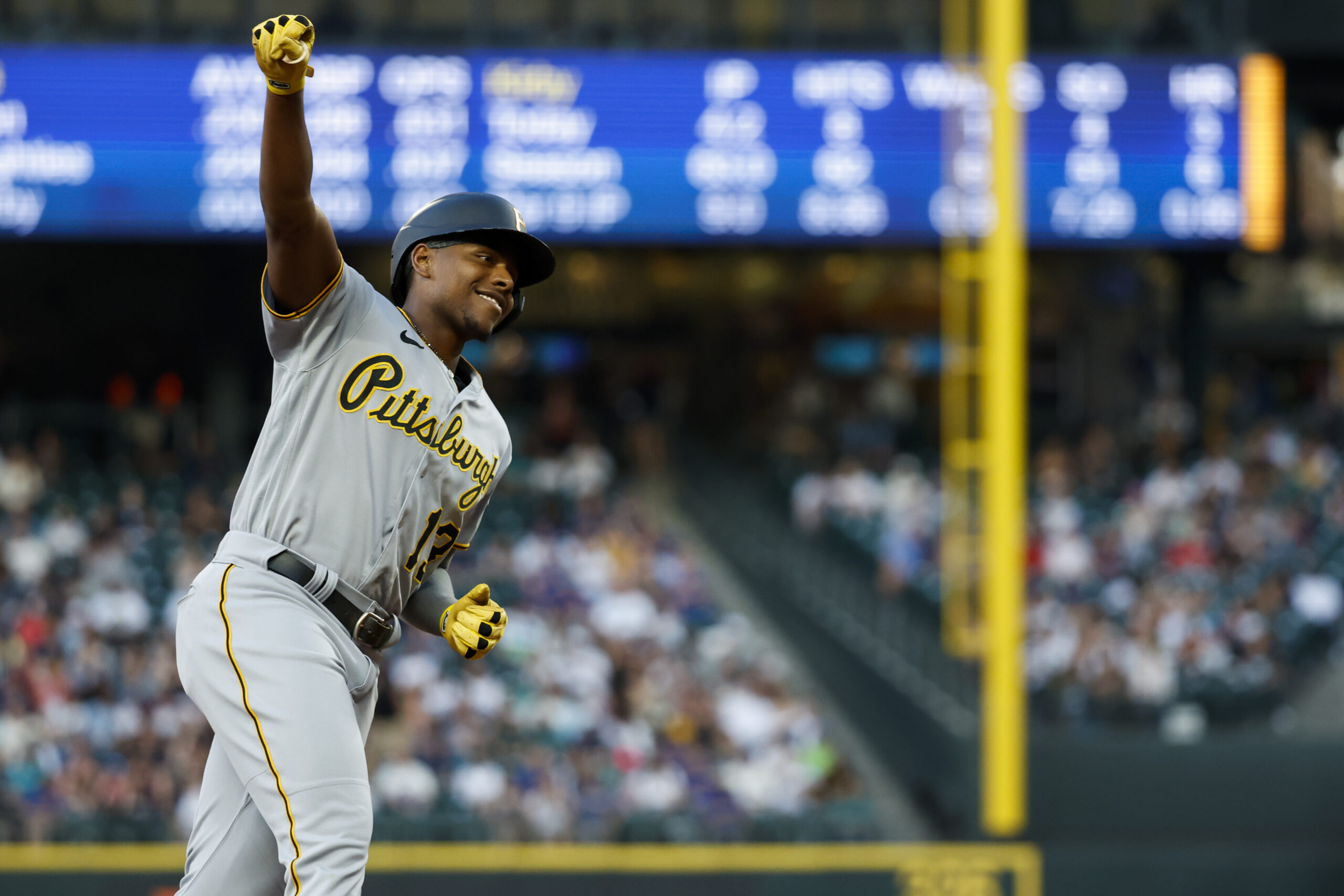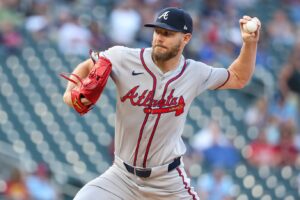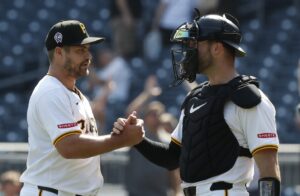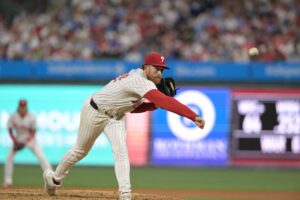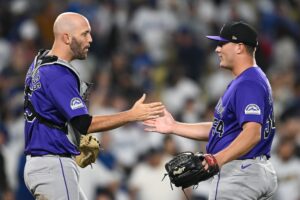With the Pittsburgh Pirates in the wild card race, Ke’Bryan Hayes must move lower in the batting order. Let’s understand up front that Hayes isn’t a bad player. He’s a very good player.
Pirates Star Should Bat Lower In The Batting Order
He produced a WAR of 4.4 and 4.0 in 2022 and 2023, respectively. However, his defense at third base contributed to the greater part of those stats. In 2022, his defensive WAR was 3.0 to lead all of the major leagues. His defensive WAR was 2.4 in 2023. Hayes won a Gold Glove Award in 2023 and probably should have won one in 2022, too. He’s an elite defender.
Hayes Should Bat Lower In Pirates Batting Order
As every astute baseball fan knows, a WAR of 4.0 is considered all-star-worthy. Nothing here is to suggest that Hayes isn’t an important contributor. Rather, the suggestion here is that he hasn’t shown himself to merit his position in the batting order.
Entering Friday’s action, Hayes is batting .238/.307/.321, 3 HR, and 17 RBI, with an OPS+ of 81 in 2024. In 2023, he reached career highs with 15 HR and 61 RBI. However, 2023 is increasingly looking like an anomaly with each passing day. For his career, he’s a .261/.319/.398 hitter. Already in his fifth major league season, he’s probably the hitter that his career stats say he is. Yet Pirates manager Derek Shelton has mostly used Hayes in the No. 3 or 5 spots in the batting order in 2024. Pirates fans will remember those spots occupied in the past by Roberto Clemente, Willie Stargell, Al Oliver, Dave Parker, and Barry Bonds. Of course, these legends played on better teams than the current Pirates. Even so, Hayes has been placed in the order higher than more deserving players.
Reassessing Hayes
The Pirates must begin to view Hayes as a glove-first player who needs to bat lower in the batting order. Ordinarily, the corner positions are bat-first positions. However, it’s not unusual for a team to carry a glove-first third baseman in the starting lineup. We’ll compare Hayes to some similar third basemen in the following table, but first, let’s set some ground rules. Hayes was a rookie in 2020 at age 23. That was a pandemic-shortened season full of statistical aberrations (including Hayes’ own .376 batting average) and thus will be disregarded. We’ll compare Hayes to four other third basemen, all in their ages 24-27 seasons. Presented is the 162-game average for each player during these seasons.
|
|
Ke’Bryan Hayes |
|
|||
| Years |
1986-89 |
2021-24 |
1975-78 |
1972-75 |
1963-66 |
| Batting avg. |
.242 |
.255 |
.261 |
.231 |
.262 |
| On-base pct. |
.309 |
.312 |
.291 |
.270 |
.335 |
| Slugging pct. |
.400 |
.383 |
.361 |
.343 |
.367 |
| Home runs |
16 |
8 |
9 |
10 |
10 |
| RBI |
55 |
39 |
71 |
56 |
51 |
| OPS+ |
93 |
92 |
79 |
73 |
98 |
Glove-First Third Basemen In Baseball History
Note that you don’t see Mike Schmidt or Bill Madlock among the four third basemen comparable to Hayes. Yet all were valuable players who had long major league careers because of their contributions defensively. The Detroit Tigers won a World Series in 1968, with Wert hitting .200 during the regular season. He was considered a good defensive player but never won a Gold Glove Award because his career in the American League overlapped that of Brooks Robinson. Rodriguez, who was also a Tiger (he was traded from the Washington Senators with Ed Brinkman and Joe Coleman to the Tigers for Wert and Denny McLain), broke Robinson’s 16-year stranglehold on the AL Gold Glove Award for a third baseman in 1976. Reitz was also a Gold Glove winner in 1975 with the St. Louis Cardinals.
None of their teams had any pretense about the kind of hitters they were. Buechele usually hits somewhere in the bottom third of the order. Reitz usually batted sixth or seventh. For Rodriguez, it was mostly seventh or eighth. He may have been a permanent No. 8 hitter had he not been on the same team as Brinkman. Wert batted leadoff frequently, but he was on a Tigers team that lacked speed and a prototypical leadoff man. When he wasn’t leading off, he hit seventh or eighth.
The Last Word On Hayes And The Pirates Batting Order
So, too, must the Pirates realize that Hayes should hit lower in the batting order, and from there, he should serve the team just fine. He’s had hot streaks – his rookie year and the end of last season come to mind. He entices the Pirates’ brain trust now and then, as he did on Tuesday with a long home run against the Cincinnati Reds. But overall, he’s the hitter his lifetime average suggests he is. He hasn’t been better since his recent return from the injured list.
These Pirates are no offensive juggernaut. The team is hitting .230/.298/.360, 68 HR, and 288 RBI. All rank near the bottom of the National League. It’s even uglier when we look at their numbers with runners in scoring position (RISP). In RISP situations, the Pirates rank 27th in the 30-team MLB with .219/.309/.350. Hayes is hitting just .182/.273/.273 with RISP. He ranks 13th among the 18 Pirates who have come to bat in 2024. Yet he’s too often hit in front of Nick Gonzales (.321 with RISP) and Connor Joe (.281).
The Pirates’ primary center fielders (Michael A. Taylor and Jack Suwinski) are batting a combined .184, while their main catchers (Yasmani Grandal and Henry Davis) are batting a combined .172. They have been occupying the No. 8 and 9 spots in the order, as they should. Hayes is suited for the No. 7 spot. It’s a tight race, and every game is important, meaning every run is important. Too often, Pirates fans and pundits have had to revisit what to do about his lack of production. It’s time for the Pirates to move Hayes lower in the batting order.
Main Photo Credits: Joe Nicholson-USA TODAY Sports


